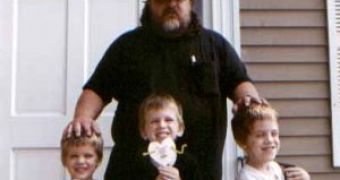Does this seem familiar?
Macho men have boys, while in "less male" men the house is crowded with daughters ... This is the case of the red deer and not only...
Red deer are polygamous and the most spectacular stags defend harems of females, fighting off weak competitors. Now, researchers have found that the strongest harem owners are more prone to father sons than daughters while lousier males bias to daughters. Naturalists have long theorized that males who are more successful in mating would produce more sons, which inherit their fathers' brilliant plumage or big antlers. Sons are more effective in spreading genes than daughters as their potential number of offspring is unlimited. This phenomenon has been proven for blue tits, but never for mammals.
A Spanish team at the National Museum of Natural Sciences in Madrid, Spain, collected testes from stags hunted during the rutting season, assessing their fitness and inseminated well-fed females with their sperm. "We were very surprised to see a large difference in fertility," said Montserrat Gomendio from the research team. Surprisingly, the sex ratio of the offspring varied from 72% male, to 75% female, and the highest positioned males, with the most complex antlers, had the most male offspring while less successful males produce daughters.
This could potentially lead to female "shortages", as the dominant stags inseminate most females. "Fortunately, says Gomendio, most animals are in the middle of the range, and the overall sex ratio in the population comes out at around 50:50."
But how does the stag influence his offspring's sex? "Either successful males produce more sperm bearing the male-determining Y chromosome, or their Y-bearing sperm are more competitive," says Gomendio. An equilibrium may be achieved because the female interests come into play.
Big, well-fed females tend to have more sons, as they are more effective in spreading genes. But male calves need more and better milk so females in poorer shape have daughters, to ensure that mother and offspring survive. A poorly-off female may mate with a high positioned male, but their interests diverge. "We now have to find out how that works out in nature," says Gomendio. "It may be that there's a bit of an arms race."

 14 DAY TRIAL //
14 DAY TRIAL //